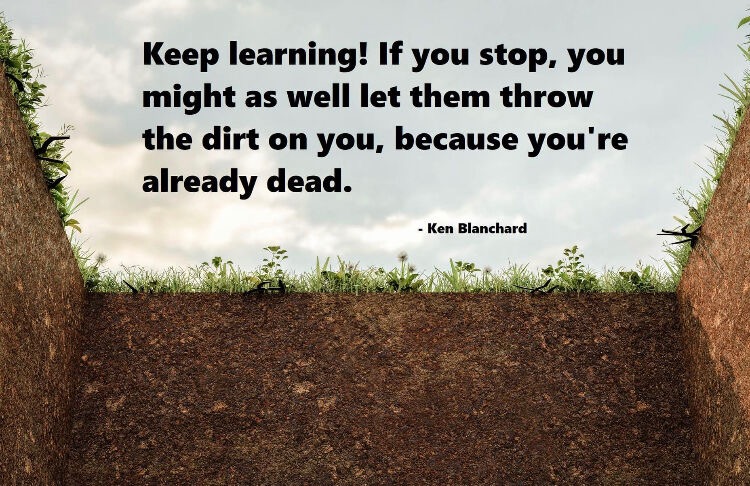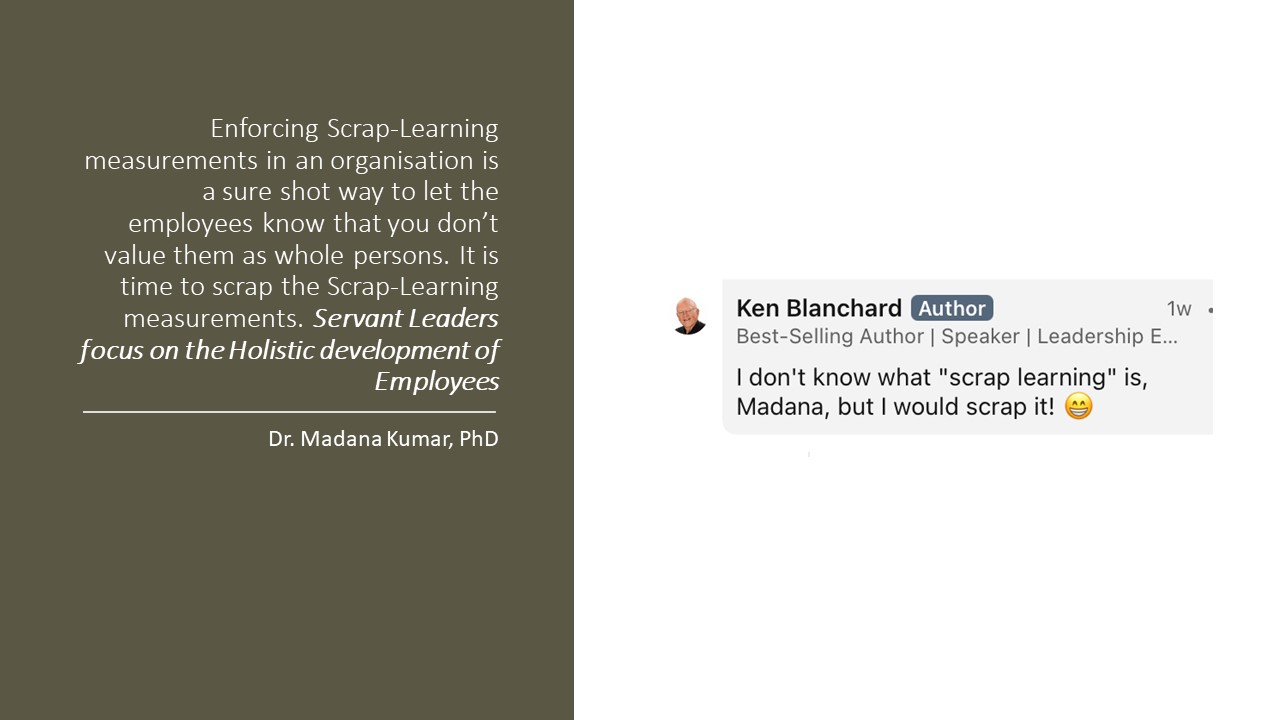In an earlier blog, I wrote about how Servant Leaders empower their employees using the attribute of Empathy. This concept of empowerment is so very essential to creating a learning organisation. Needless to say, learning organisations thrive.
So how do we empower our learners and create a culture of continuous learning in the organisation.
Let us start with a question. Should organisations focus on the holistic development of employees or invest only on monetizable skills?
Thomas Friedman in his book “Thank you for Being Late” emphasizes the fact the Technological advances have overtaken human adaptability. Because of this, employees cannot have the luxury of “taking-time-off-to-learn” but must “learn-all-the-time”. That means they must have access to learn during working hours, during traveling, or doing household chores, etc.

In their book “The 100-Year Life–Living and Working in an Age of Longevity” authors Andrew J Scott and Lynda Gratton of the London School of Economics, bring out the fact that today’s employees have multiple choices because of the multi-stage life (as against the three-stage life of earlier times) that today’s generation has access to. This gives an entirely fresh perspective to employee loyalty. Employees who have a choice will require that organisations invest in them as whole persons rather than as “resources” required to meet the organisation goals.
One of the major hurdles that come in the way of Holistic development of employees is the concept of Scrap learning.
In the early 2000s several people started studying about how much of organisational learning delivered is applied at work. This included illustrious Learning Leaders like General Frank Anderson, and Dr. Robert Brikerhoff. Organisations like KnwoledgeAdvisors who popularized the “Metrics that Matter” concept picked this up, and it is believed that they coined the term Scrap Learning for any learning that was not applied on the job. KnwoledgeAdvisors was later acquired by CEB and then by Gartner. The studies by CEB and Brinkerhoff estimated a whopping 45 to 80% of learning investment as Scrap Learning. This soon became a selling point for Predictive Learning Analytic tools.
While the concept of Scrap Learning itself is not wrong, the way it got applied in several organisations became suspect. L&D heads were given yet another metric to prove their existence. The clamor for RoI on every Learning dollar was already high, and the concept of Scrap Learning added to the ammunition of Nay-sayers on Learning Investments. Finance organisations established how many millions they can save if only the L&D function reduced Scrap Learning by as little as 5%.
What took a hit was the focus on the Learning culture of the organisations that focused on Scrap Learning maniacally. Such organisations forgot to look at the impact the concept of scrap learning has on employee engagement. Some leaders could not tolerate the fact that employees might spend time (and company’s money) to learn photography or cooking instead of Angular JS. In an actual case that I experienced, that was exactly what happened initially, when we have everyone access to all learning resources from a premier e-learning provider. The leaderboard showed Photography as the most consumed course in the first four weeks. However, my theory was that when you give employees an option to learn, when you democratize what employees learn, they will ultimately learn what is beneficial to the organisation. And accurate enough, the trend changed gradually in the next several weeks and Angular JS became no 1, and photography receded to the 25th position.
When organisations insist they invest only in skills that are monetizable or can immediately be translated into business results, the obvious message that the employee gets is this. “You are a resource for us. Hence any investment in you has to have a tangible return”. Contrast this to an organisation that lets employee choose what they need to learn. The message that the employee gets here is “We value you as a person and will invest in your development. You choose what you need for your development”. It is rhetorical to ask which message will give better employee engagement. Isn’t it?
Ken Blanchard says
“Keep Learning! If you stop, you might as well let them throw the dirt on you because you’re already dead”.

I engaged him in a conversation about scrap learning based on this. And I loved his comment. “I don’t know what ‘scrap learning’ is, but I would scrap it”. That sums it up for me.

In our Servant Leadership model of DEEP BHC behaviours, H stands for Helping Others Grow and Succeed. This requires commitment to the growth of others described by us as
“People have an intrinsic value beyond their tangible contributions as workers. Commit to a personal, professional, and spiritual growth of each and every individual within the organization”
It is time to scrap the “Scrap Learning” concept and invest in the holistic development of our employees. Join the Servant Leadership movement and Help Others Grow and Succeed. The returns are prenominal.
_______________________________________________________________________________________
 Dr. Madana Kumar, PhD is the Servant Leadership Evangelist and Chief Consultant at Leadyne. You can connect with him here or contact him here.
Dr. Madana Kumar, PhD is the Servant Leadership Evangelist and Chief Consultant at Leadyne. You can connect with him here or contact him here.
An edited version this article also appeared in CEO Insights India website




Comments are closed.